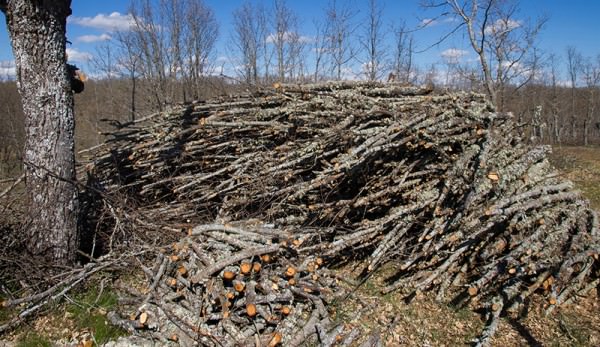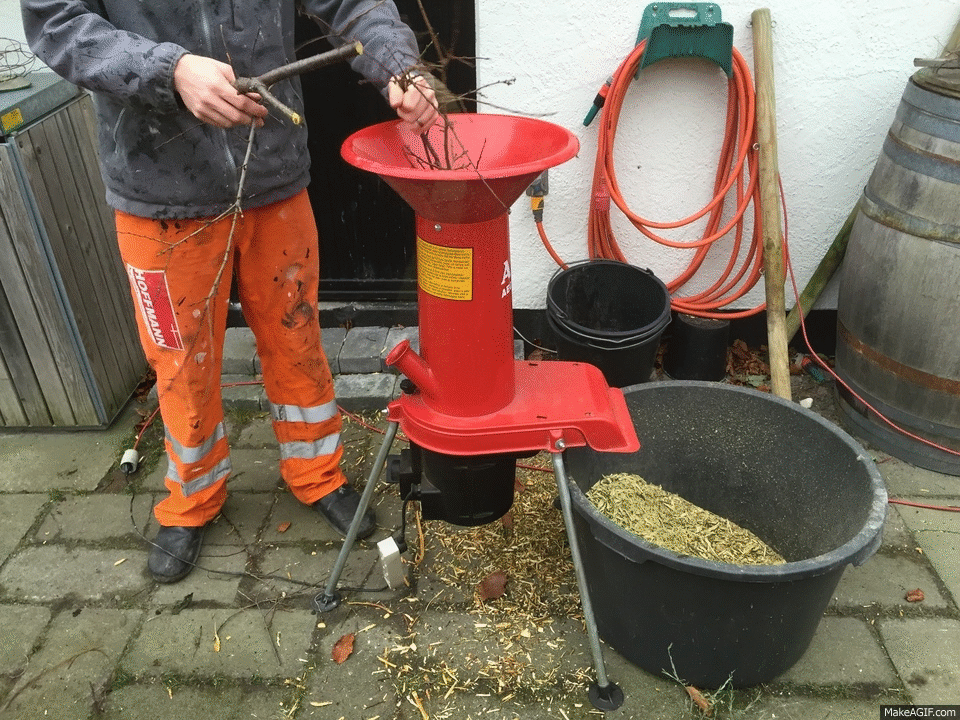
Trees absorb carbon from the atmosphere, and a 48 to 50 percent of their aboveground woody tissue is constituted of such. While we think of trees as growing out of the ground, they are also, in a sense, being constituted out of the atmosphere, making them vital in carbon sequestration efforts.
When creating an edible forest garden, I find myself doing an enormous amount of tree pruning. Most trees can produce a prodigious amount of biomass—the majority of which is carbon—in the space of a year, and it can be hard to find a use for all of that wood, especially when it is in the form of new growth with the diameter of a pencil. Carbon is, however, the basic building block for rich “black gold” compost, and wood is also an excellent substrate for mushrooms and good funguses to grow on, so even though I am sometimes overwhelmed by the abundance of solid plant tissue, I am also grateful for the soil building resources woody waste provides.

Using wood in the garden can take a variety of forms, most of which depend on size. I usually leave enormous trunks of felled trees to decompose in situ, where they become habitat to detritus feeders, like pillbugs and beetles, as well as creatures like solitary bees and wasps. Larger logs I keep for firewood or bury in hügelkultur mounds along with some brush and other garden waste. Smaller sticks, like first-year water sprouts and 2- to 3-year-old growth, I shred with a home wood chipper and either lay on the soil as mulch or blend in the soil to bulk it up.
Wood will decompose at variable rates, depending on factors like exposed surface area, moisture, temperature, fungal colonization, insect activity and oxygen exposure. During decomposition, the areas surrounding may experience a dip in nitrogen, as fungal activity increases and uses it up. Using a nitrogen-rich soil amendment (like peecycling!) can balance out this issue.
Although it’s a long-term project, using wood in your soil can go a long ways towards improving its organic matter content.




